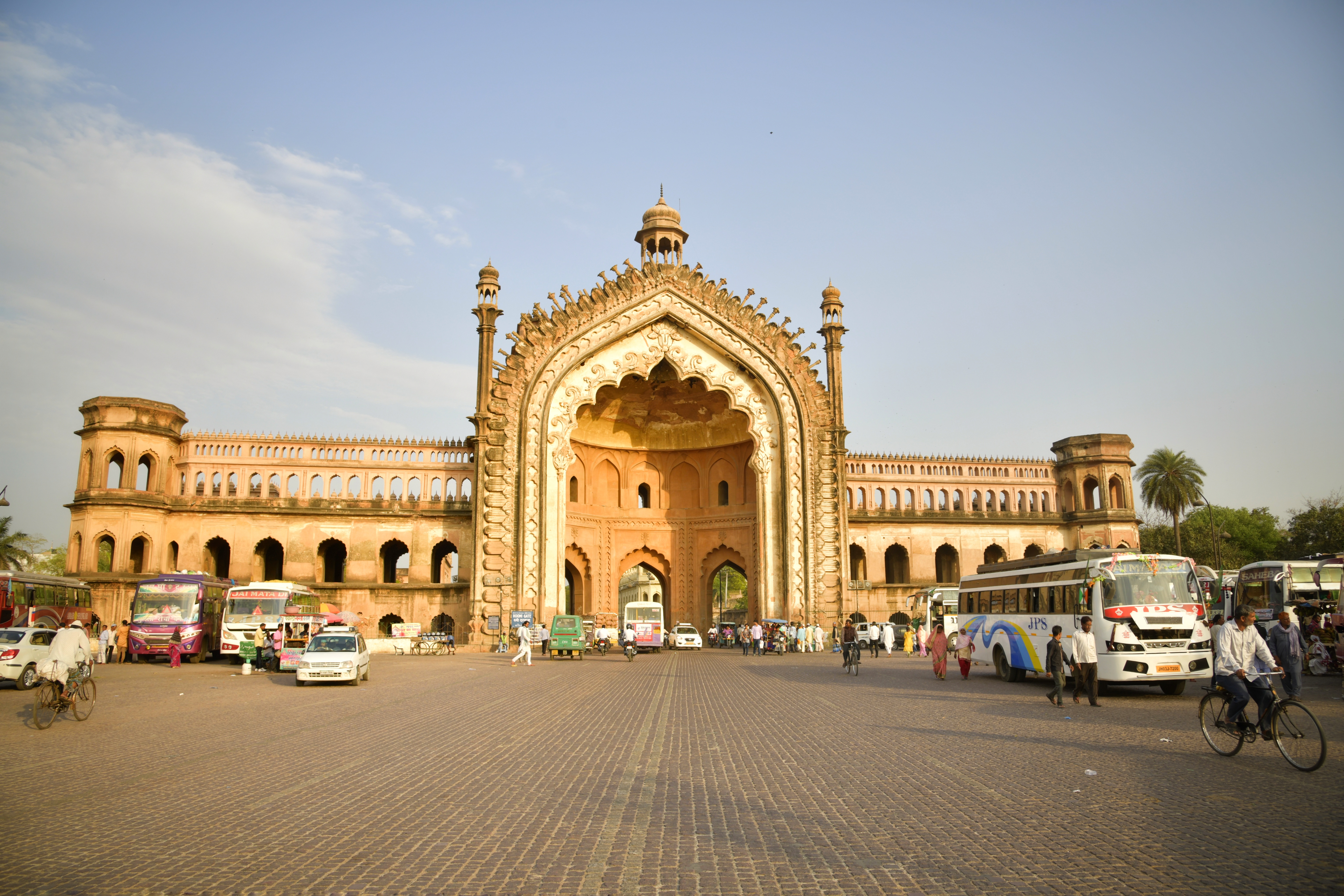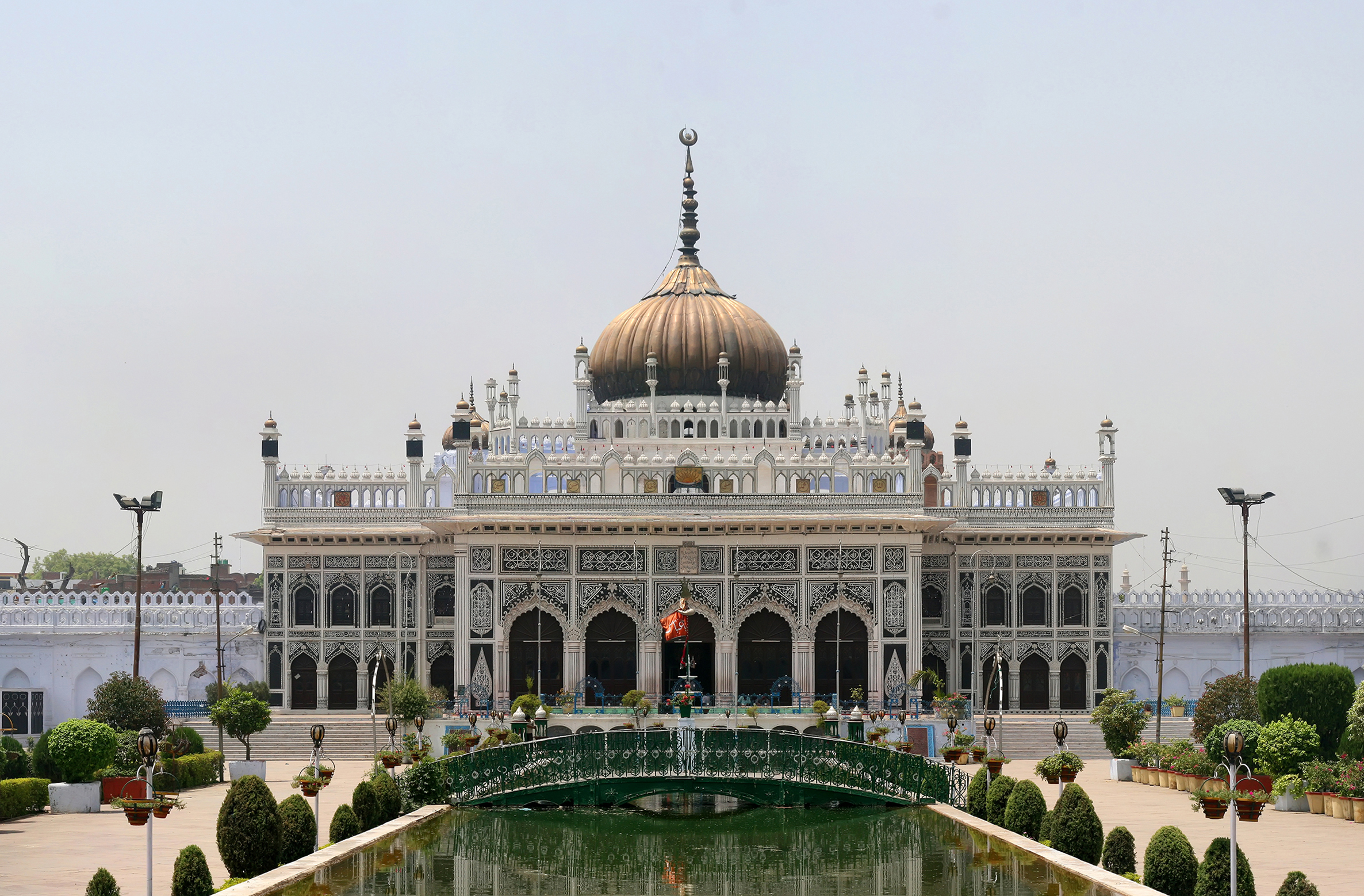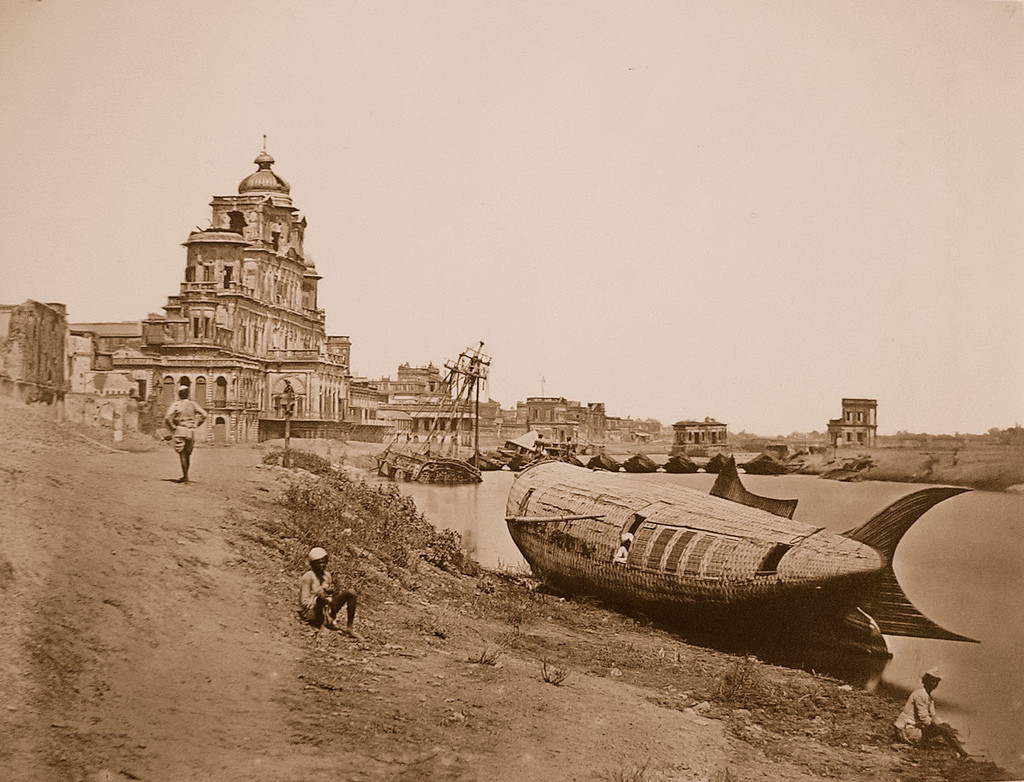Rumi Darwaza stands as a magnificent testament to the architectural and cultural grandeur of Lucknow during the late 18th century. Constructed in 1784 by Nawab Asaf-ud-Daula, this monumental gateway emerged during a period of severe famine, serving not just as an architectural marvel but as a beacon of hope and resilience for the people of Awadh.
The gateway's design reflects a unique fusion of architectural influences, drawing inspiration from the Bab-i Humayun in Istanbul while incorporating elements of Roman, Mughal, and Awadhi styles. Persian architect Kifayatullah meticulously crafted the structure, transforming traditional architectural conventions and creating a landmark that would become synonymous with Lucknow's cultural identity.
Standing at an impressive 60 feet, Rumi Darwaza is constructed using bricks coated with lime, a technique that allowed for more intricate detailing compared to the red sandstone prevalent in Mughal architecture. The octagonal chhatri crowning the structure and the elaborate carvings showcase the exceptional craftsmanship of Awadhi builders, who were renowned for their artistic sophistication.
The gateway's historical significance extends beyond its architectural beauty. It was part of Nawab Asaf-ud-Daula's ambitious vision to elevate Lucknow into a stately capital that could rival the great Islamic cities of the time. By providing employment during a devastating famine, the Nawab not only created a magnificent structure but also demonstrated remarkable social responsibility and leadership.
In its prime, Rumi Darwaza was more than just an entrance to the royal palace. The intricate archway was designed with remarkable ingenuity, featuring flower bud carvings that could squirt water and a massive lantern illuminating the topmost framework. These details exemplify the innovative spirit and aesthetic sensibilities of the Nawabi era.
Today, Rumi Darwaza has transcended its original purpose to become a symbol of Lucknow's cultural heritage. Often referred to as the Turkish Gate, it stands adjacent to the Asafi Imambara and has become a de facto logo for the city, prominently featured in tourism promotions and cultural representations.
Despite its historical significance, the gateway faces challenges of preservation. The constant vibrations from passing vehicles and the inherent fragility of brick and mortar construction pose ongoing threats to its structural integrity. Yet, it remains a protected monument under the Archaeological Survey of India, continuing to attract visitors who are drawn to its rich historical narrative and architectural splendor.
The story of Rumi Darwaza is ultimately a narrative of human resilience, artistic vision, and cultural transformation. It represents a moment in history when creativity and compassion converged to create something truly extraordinary, serving as a lasting reminder of Lucknow's golden age and the enduring spirit of its people.







